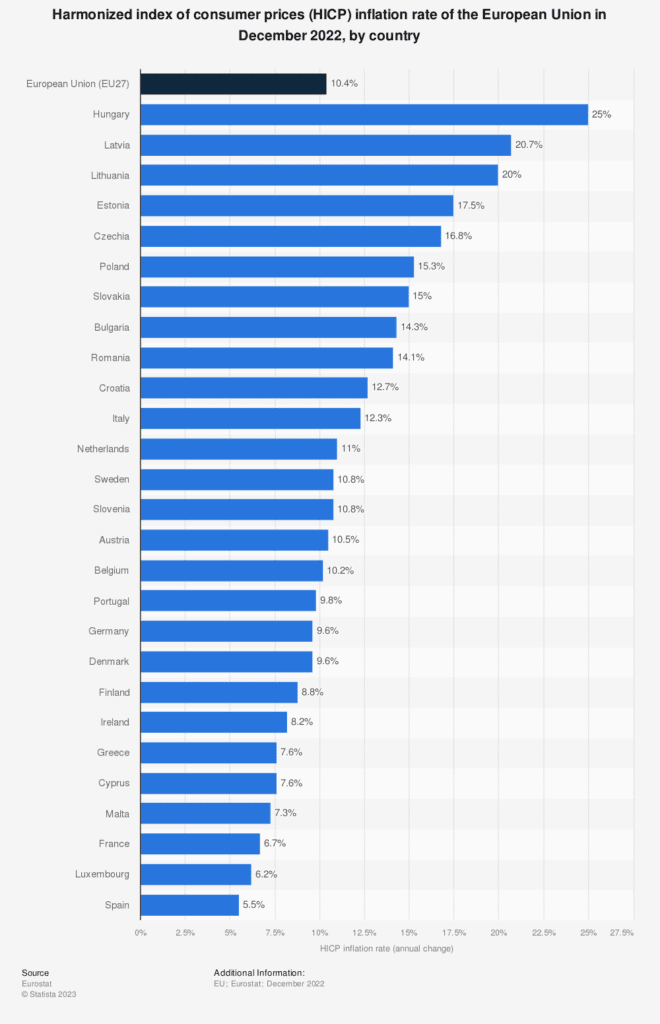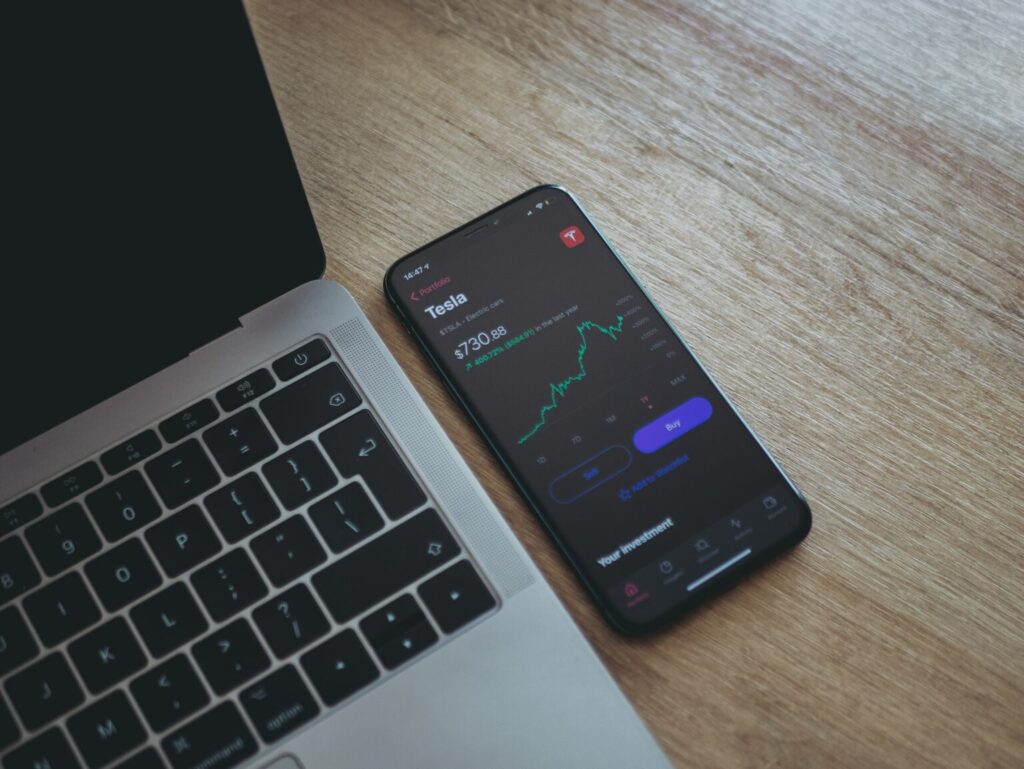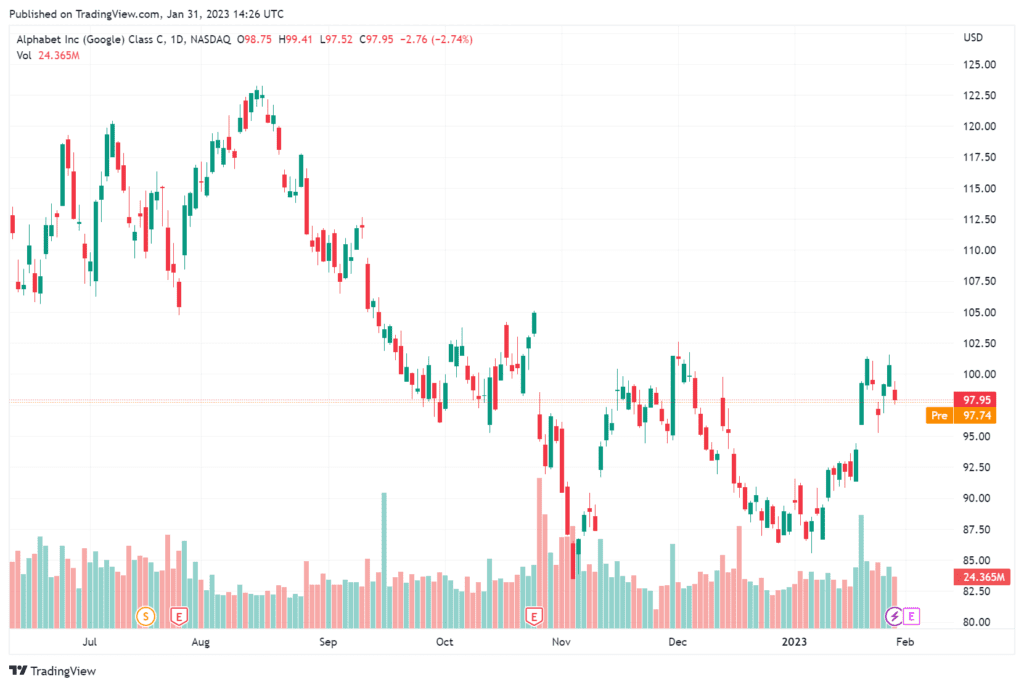[TOP 10] What to invest in this year

The pace of price growth will most likely double this year as well. It means that inflation will also bite into the savings. This is also why many households will continue to deal with the question of how to protect their saved money from inflation and where to invest it so that it does not lose value. Maybe this year will be a bit more favorable in this respect than last year. Read about best investments, what is inflation and what to invest in this year.
List of Content
- What is inflation and how can an investor fight against it?
- So is it worth investing and how?
- What to invest in this year
- Principles of proper investment
What is inflation and how can an investor fight against it?
The enemy of every saver is inflation. That is, a phenomenon where there is a general increase in prices in the economy, and which reduces the purchasing power of our savings. Simply put, for the one thousand crowns you have in your wallet, bank account or even a passbook (as our grandmothers used to say), you can buy fewer goods today than a year ago. Precisely because within a single year the prices of goods have risen.
Inflation of last year reached 15.1 percent. This means that if by pure chance you forgot a 1,000 note somewhere in a drawer in January 2022 and it was pulled out a year later, its purchasing power was no longer 1,000 crowns, but only 869 crowns. Yes, a full 131 crowns fell victim to the price hike, which last year was the largest since 1993.
And for example, according to the current macroeconomic forecast of the Ministry of Finance, the inflation rate this year will only drop to 10.4 and not to 2 percent, as we were used to relatively recently. Those who leave their 1,000 kroner to inflation this year will lose another 82 kroner.
It is therefore advisable to do something with your savings if you haven’t started yet. And this means not only transferring them from a regular bank account to a savings or term account, but actually actively investing at least part of them in various types of assets.

So is it worth investing and how?
When deciding where to invest your savings, you cannot only take into account the expected return. The percentage by which the investment will appreciate your money is only one of the three parameters that influence the “quality” of such an investment. In addition to yield, risk and liquidity also play an important role. The problem is that these factors go against each other.
In other words, you cannot have an investment that will be profitable, liquid and risk-free (with low risk) at the same time. One is always at the expense of the other. Are you attracted by an investment that promises a high interest profit? Then there will most likely be a catch, and such an investment is associated with higher risk or low liquidity (or both). A highly liquid (that is, easily convertible to money) investment does not usually bring an attractive valuation, but it can be characterized by low risk. And so on and on and on.
Finding an investment that combines a relatively decent return, acceptable risk and solid liquidity is something like searching for the holy grail. It’s squaring the circle, if you will. That’s why you can’t proceed any other way when investing than investing in different types of assets. Experts say that we create a so-called portfolio.
By portfolio we mean the composition of different types of assets, which are characterized by different riskiness, liquidity, but also profitability. It means that we don’t invest all of our savings in just one asset. Just like we don’t put all our eggs in one basket. We are talking about portfolio diversification.
Our investment portfolio should be composed in such a way that it balances the three mentioned factors. Therefore, it is okay to have risky assets represented in it, for which we expect a high return, and it is also okay to bet on assets with a low risk, but also a lower expected return. Ideally, the portfolio should be composed in such a way that a possible decrease in the value of one part of the assets is balanced by an increase in the value of another part of the assets. And for the portfolio as a whole to bring a positive return, i.e. to be able to outweigh the influence of inflation.
How high a proportion of risky, medium-risk and the least risky assets should be represented in your portfolio? Well, it depends on how big a player you are. We generally distinguish three types of investors: risk-seeking, risk-neutral and risk-averse investors. Those who are willing to take more risks will build their portfolio with a greater representation of, for example, shares, cryptocurrencies or commodities, a risk-neutral investor will choose a balanced option, a risk-averse investor will rather bet on (government) bonds, conservative mutual funds or even futures deposits.
What to invest in this year
Now let’s see what assets can be invested in this year with the hope that they will beat inflation and bring real appreciation to our savings.

Read also: Investago review
Cryptocurrencies
Cryptocurrencies, or digital or virtual currencies, are currently among the riskiest assets. It is perhaps the most risky asset in itself today. There are hundreds to thousands of types of cryptocurrencies. Therefore, if you are thinking of investing in them, be very careful. It is not too difficult to run into fraudsters. However, if you have already decided on cryptocurrencies, give preference to the established ones, such as Bitcoin, Ethereum and the like.
But nothing ends there, rather it just begins. Cryptocurrencies are risky because they fluctuate significantly in value. It is not unusual that from day to day, or even from hour to hour, their market price can go up by tens of percent, as well as down by tens of percent. It is therefore advisable to invest only a small part of your savings in cryptocurrencies. And maybe even one that, in the worst-case scenario, you wouldn’t have to miss if you lost it.
Currently, however, cryptocurrencies (primarily Bitcoin) are near their more than two-year low. With a degree of caution, it could thus be said that now is the right time to invest in cryptocurrencies.

What to invest in – Stocks
Shares are also very risky assets. With a bit of exaggeration, it could be said that if cryptocurrencies had not emerged, shares would still be leading the risk ranking. But precisely because the risk associated with shares is high, this type of securities offers interesting opportunities to evaluate the investment placed in them.
However, there is no share like a share. It depends on what we expect from our investment in them. Whether a short-term profit realized by buying when the stock is “down” and selling when it appreciates, or whether we follow a long-term investment strategy. If we are talking about pure speculation on the rise of the price, then it is a very difficult discipline for a small saver or an ordinary mortal without experience. It requires virtually constant monitoring of market developments and collecting as much information as possible not only about the share in which we intend to invest, but also about the surrounding environment, which undoubtedly affects its value.
In the case of stocks, it is therefore more reasonable to choose a medium- or long-term investment strategy. In addition, it is advisable to choose a balanced mix within stock investments. This means getting representatives from different industries into your stock portfolio. For example, it is not advisable to invest only in shares of energy companies, or only in pharmaceutical companies, or exclusively in arms titles.
Similar to cryptocurrencies, we are probably at a relatively opportune time to invest in stocks. The stock markets fell by tens of percent last year. On the contrary, since the beginning of this year we have seen a possible reversal of the trend, so stocks should not escape our attention. But still aware that it is a relatively risky type of investment.

Don’t overlook: Zetano Review
What to invest in – Gold
Investing in gold is considered one of the less risky. Gold has always served as a safe haven in the turbulent waters of the financial markets. Gold has the advantage that it is fairly liquid, you shouldn’t have a problem cashing it at any time. At the same time, however, it is necessary to take into account that it is more of a long-term investment. Especially in the last three years, an increasing trend cannot be observed.
Gold became a very attractive investment shortly after the outbreak of the coronavirus pandemic. Back in August 2020, it created a new historical record when its value rose above two thousand dollars per troy ounce. But when it became clear that the pandemic did not cause a long-term and deep economic crisis, interest in gold declined and with it its price. A similar upward swing occurred after the Russian military invasion of Ukraine, but a few months later the price of gold fell to a two-year low.
Only with the arrival of last fall, when inflation in the European Union and the United States began to rise significantly, did gold become attractive again. A troy ounce is trading around $1,950, just shy of an all-time high. To some extent, this may signal that the value of gold no longer has much room to grow. It could be clearer after the monetary policy meeting of the American central bank (Fed), when its governor Jerome Powell will announce whether and to what extent it has decided to raise interest rates. Gold still has a certain potential for appreciation. In any case, it is an asset that resists inflation in the long term.

What to invest in – Real estate
Similar to gold, real estate also behaves. Invested savings protect against inflation quite well. However, real estate is characterized by much lower liquidity. In other words, while selling a stock, cryptocurrency or gold is very easy and can be done in a matter of minutes, monetization in real estate takes much longer. Weeks, sometimes months.
In addition, the real estate market is currently undergoing a certain transformation. While between 2015 and 2021 real estate prices in the Czech Republic increased by almost 120 percent on average (according to CZSO data), in the last year there have already been reports of their decline from some regions of the Czech Republic.
But it still makes sense to invest in real estate. Not because of the prospect of their quick appreciation, but because of the rent that can be collected from the purchased house or apartment. The demand for rental housing is still growing. This is due to the rapid decline in interest in mortgages for the purchase of owner-occupied housing, due to the steep rise in interest rates. People change their plans so often, so instead of buying an apartment or a house with a mortgage, they prefer rental housing. Here too, however, it is necessary to carefully monitor how the rental housing market develops. Rents are not increasing everywhere, on the contrary, there are relatively large regional differences within the Czech Republic.

Building savings
Building savings is one of the symbols of the beginnings of the economic transformation of the Czech Republic. This product entered the domestic market in the first half of the 1990s and its goal was to motivate Czech households to save, especially for the purpose of renovating or building residential properties. The product was also attractive thanks to the relatively generous state support, which initially amounted to 25 percent of the amount saved, a maximum of 4.5 thousand crowns per year.
However, state support was gradually reduced and the so-called binding period (that is, the minimum period that the construction savings contract must last) was also extended. Currently, the state contributes ten percent of the saved amount, but no more than two thousand crowns per year, and the commitment period lasts six years.
However, as part of the consolidation of public finances, the current government is considering withdrawing state support for building savings completely. And it is not excluded that this will also happen with contracts that are already running. In the past, the limitation of state support also concerned them, not only new contracts.
It is obvious that, especially at a time when inflation reaches double-digit values, building savings is advantageous thanks to state support. If this product is lost, it is not clear how the building societies will react to it. It is possible that as part of the fight for clients, they will increase interest rates, so building savings might not lose their attractiveness completely. From the point of view of a conservative investor, it can thus remain an interesting product. Especially if you are considering a building savings loan, which could be obtained on more favorable terms than a mortgage loan. In any case, the state support will most likely be paid this year, so building savings are still worth having in your portfolio.
Savings for old age
Savings for old age is another option where you can invest part of your savings for the long term. And it basically includes two products: supplementary pension savings and endowment life insurance. In both cases, these are savings or investment instruments that are supported by the state. For additional pension savings, a deduction from the income tax base can be applied, up to 24,000 crowns per year, in addition, each participant is entitled to state support, and the employer can also contribute up to 50,000 crowns per year. For endowment life insurance, only a tax deduction of up to 24,000 crowns per year can be claimed.
However, relatively strict conditions for “withdrawal” of money are set for both products, so both are characterized by practically zero liquidity. If you withdraw the saved money early, you will return the state support and add the amounts that you deducted from the tax base in previous years.
Despite the notions that sometimes appear, none of the mentioned products are insured. This means that if the pension company or insurance company goes bust, you are not guaranteed to get back all the money you have saved in this way so far. From a short-term point of view, it is therefore a relatively disadvantageous method for capitalizing investments. On the other hand, if you are considering a long-term product in your portfolio, it pays to save this way as soon as possible. Albeit in small amounts at first.

Bonds
Bonds or bonds are a relatively popular investment. Here we have a choice of bonds issued by the state or another public institution and bonds issued by a private issuer. Here, too, the well-known triad of yield-risk-liquidity applies. Although bonds are generally classified as safer assets, there is a distinction to be made between them.
Government bonds are the safest, but at the same time we expect the lowest yield from them. Of the private bonds, those issued by banking houses, as well as companies with a long history and whose business activities do not pose an increased risk, can be considered relatively safe.
The advantage of the bond is that their issuer guarantees a regular return and, after the maturity date, the return of the loaned amount (principal). You don’t even have to hold the bond to maturity, but you can sell it earlier. The current situation favors bonds (from an investor’s point of view), as interest rates are rising, so bonds offer a relatively solid appreciation for a conservative investor.
Read futher: Bitmarkets Review
What to invest in – Commodities
We have already talked about gold. In addition to it, there are a number of other commodities in which you can actively invest. And it doesn’t have to be just precious metals. Currently, industrial metals such as nickel, lithium, copper or aluminum are a hit. Their prices have increased by tens or even hundreds of percent in the last two to three years. The reason is simple: green transformation and the pursuit of carbon neutrality.
The boom in electromobility or renewable energy sources has literally catapulted the demand for technologies that make it possible to store electricity. We would simply say the demand for batteries. All the mentioned metals are needed for their production, which creates pressure for their price to rise.
However, commodities such as natural gas, oil or coal should not remain a side of interest. Although in the long term these are rather raw materials that are past their zenith, the current lack of energy still gives them hope that they will remain on the market for some time. However, you need to be careful which of the commodities you choose. In the case of oil, its price can be expected to rise, while the value of natural gas is subject to relatively significant seasonal fluctuations. In addition, it seems that the record gas prices that we have experienced in the past year in the European market will not last. Europe is managing to find alternative suppliers, so it will not be dependent on supplies from Russia.
What to invest in – Mutual funds
Mutual funds are a relatively safe and relatively profitable investment. It is a so-called collective investment tool, where the fund collects money from small savers, which it then invests in various assets.
For such an investment to make sense, regularity is important. In other words, it is about sending a certain amount regularly (most often monthly) to the selected fund. In this way, you actually save and invest at the same time, or the fund invests for you. The advantage is that you do not have to worry about the development of the prices of various assets, the fund manager monitors this for you.
The disadvantage is that you pay fees to the administrator, which reduce the volume of your income. It then depends on you in which type of fund you invest your money. Again, this is closely related to your attitude to risk. You can choose stock, bond, commodity, real estate or mixed funds in which each asset is represented a little. There is an abundance of funds on the market, so it is good to choose those that already have some history, are backed by strong financial companies and at the same time it is possible to see how they have done in the past.
Savings accounts and term deposits
Money in savings accounts or time deposits belong to ultra-conservative savings tools. Here you can be sure that you will practically not lose your money, as it is legally insured up to 100,000 euros, or the crown equivalent. However, it is true that this is always the total amount of money that you have deposited in one bank, regardless of how many accounts.
At the same time, however, accept returns that will not exceed or cover inflation by any means. It is a tax on absolute liquidity and absolute certainty. The money in the savings account is available to you at any time, in the case of a term deposit, you usually pay a penalty to the bank in case of early withdrawal.
Still, it’s okay to keep some of your savings in this form. It should always be just the most necessary reserve in case of an unexpected event, it also makes sense to have money ready if you know that you will soon have a bigger expense. However, if this is how you take care of the vast majority of your savings, or perhaps even all of them, bad language people would say that you are the heroes of today, because you are willingly impoverished by extremely high inflation.

Principles of proper investment
Let’s conclude by summarizing the basic principles of proper investing:
- Do not make a decision based only on the expected (promised) return
- The yield must always be compared with the risk and liquidity of the investment under consideration
- Yield-risk-liquidity are the characteristics of every investment, which moreover go against each other
- Your investment portfolio should be balanced, according to the principle “don’t put all your eggs in one basket”
- Consider your attitude to risk
- Invest regularly and in smaller amounts
- Invest only a part of your savings in risky assets, ideally such a volume that you can lose in the worst case
- Invest wisely and not emotionally
The article is also available in other languages: Czech, Slovak.
